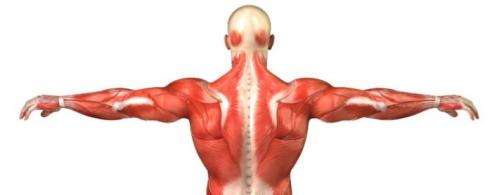Sports scientists piecing together jigsaw puzzle of muscle growth

ports scientists at the University of Stirling have created a blueprint to help piece together the puzzle of human muscle growth.
Health and Exercise Science researchers from Scotland's University for Sporting Excellence have developed a quantitative method to better understand the signals which control muscle growth following exercise.
Their findings, published in the Journal of Applied Physiology, are being used in a number of new projects which could lead to benefits for athletes and elderly people.
Loss of muscle mass and function is an inevitable part of the aging process and increases the risk of trips and falls: half of women over the age of 65 who fall and break a hip become completely immobile. Muscle wasting also leads to impairments in carrying out everyday tasks, from crossing the road safely to rising unaided from a chair.
"There is still a relatively poor understanding of how muscle grows or is lost and what's involved," explained Dr Lee Hamilton, a Molecular Physiologist in the School of Sport at the University of Stirling and Principal Investigator of the study.
"We know a lot about some of the pieces of the puzzle, but we do not yet have the whole jigsaw picture. What's more, our ability to measure the responses of the bits we do know about has been reliant on subjective measures. Our research is intended to develop a cost effective way to accurately measure the activity of these key components of muscle growth.
"Our body has an estimated quarter of a million proteins and each one performs a different role. We focused on the protein p70S6K1 which, in muscle terms, acts like a foreman on a building site, so it can be thought of as a key to controlling the process of muscle building."
During the study, six athletes who play team sports performed a series of leg press and leg extensions before consuming 20g of egg protein – a standard muscle building product. Muscle biopsies were taken at three stages, one before the exercise and two after consuming the protein to determine the measurement.
Dr Hamilton added: "We found the combination of the exercise and consuming the protein solution produced a two-fold increase in the activity of the protein, p-70S6K1. Developing this accurate understanding of its response to nutrition and exercise is vital because if the protein is impaired then muscle can't grow.
"The next stage is to focus on the response as a result of factors such as age, inactivity and disease as this would identify its receptiveness to drug treatments for muscle wasting conditions."
Stirling scientists developed this standardised measurement in collaboration with colleagues at the University of California; Paris Descartes University; Liverpool John Moores University and the University of Birmingham.
Professor Kevin Tipton, who leads Stirling's Health and Exercise Science Research Group in the School of Sport, said: "This research shows our capability to perform state-of-the-art molecular and metabolic techniques to investigate factors that will influence changes in muscle mass and strength. Our research group is now poised to continue this exciting work that will provide important information that will help athletes, as well as others vulnerable to muscle loss."
More information: "Application of the [γ-32P] ATP kinase assay to study anabolic signaling in human skeletal muscle." jap.physiology.org/content/116/5/504
















